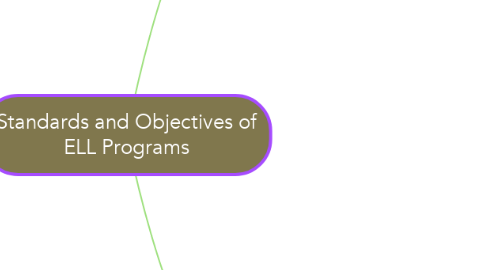
1. Dual Language Immersion Program Two-way Model
1.1. Standards
1.1.1. The students will learn about two geographic locations, histories, and cultures by the regional language.
1.1.1.1. Objectives
1.1.1.1.1. Divide students in small groups, where all the groups will have both Native English speakers and Non-Native language speakers to help each other to research the subjects by applying their prior knowledge.
1.1.1.1.2. Students will research the geographical location, history, culture, and famous historical people from the each region in the language of the country by using books, internet, and travel-guide. Students will understand and learn about the culture in depth by thinking, learning, and comprehending in the language of the region. Students will gain reading skills.
1.1.1.1.3. Students will apply their prior knowledge to discuss about the topics. By doing so, they will gain conversational skills.
1.1.2. Learn how to read and write in both English and their home language simultaneously, while they continue to make academic progress in both languages.
1.1.2.1. Objectives
1.1.2.1.1. Using 90/10 or 50/50 model, meaning 10% English instruction in a day at an early age for Native English speakers, and 90% of Spanish throughout the day. Later on the educations, ideally around 5th grade will start integrating curriculum in both English and L2 50/50%. By the time when they are in the middle school, the Native English speaker achieves higher than the grade level, and EL students will achieve grade level of writing and reading skills.
1.1.3. Design meaningful and challenging activities to foster higher order thinking skills (HOTS) to strengthen dual language and literacy development.
1.1.3.1. Objectives
1.1.3.1.1. A set of intelligent behaviors that will help individuals address uncertainty and solve problems effectively, such as persisting, taking reason- able risk, thinking interdependently, or applying old knowledge in new situations, etc.
1.1.4. Learning Through Hands-on Activities
1.1.4.1. Objectives
1.1.4.1.1. Students at an early age will engaging learning in hands-on activities than ears and oral. Classroom activities are arranged on open, reachable shelves, referred to as centers, so that students can access them easily. Each center houses activities related to a specific area of the curriculum: life skills, language arts, math, science, international studies, library, technology, and so on. All of the necessary materials for each activity are stored on a tray or in a box or plastic container. Visual appeal is important: activities must be presented in an orderly, inviting manner.
2. Transitional Program
2.1. Standards
2.1.1. Gaining Conversational Skills
2.1.1.1. Objectives
2.1.1.1.1. Face to face conversation comprehension of simple words and phrases used in everyday context.
2.1.2. Gaining Reading Skills - Guided Reading
2.1.2.1. Objectives
2.1.2.1.1. Small group of reading to help students fountas and pinnell.
2.1.2.1.2. Individual students to learn how to process a variety of increasingly challenging texts with understanding and fluency.
2.1.3. Gaining writing skills
2.1.3.1. Objectives
2.1.3.1.1. The beginner English learning students will copy a sentence or short passage exactly as it is written. By doing so, the beginning-level students who are not very familiar with the language will interpret some of the information as they copy it.
2.1.3.1.2. The intermediate students will receive paragraph or two that has blank spaces in the text. The students write the word or phrase that completes the sentence. This allows the student to write an amount that is not overwhelming and helps them comprehend the information.
2.1.3.1.3. The advance students will write their own but perhaps they receive paragraph prompts or are allowed to look in a book, but must put the idea in their own words.
2.1.4. Gain Grammatical Skills
2.1.4.1. After reading a book aloud to all the students, a teacher asks each student a simple question. Students will write one sentence for an answer, and the teacher will analyze the student's grammar.
